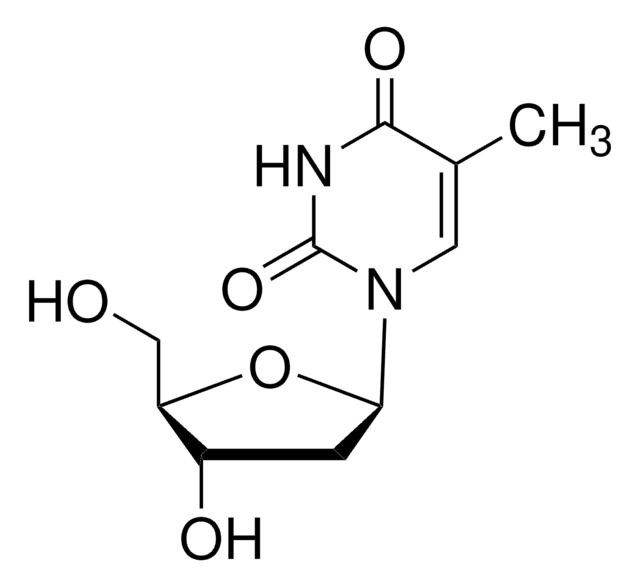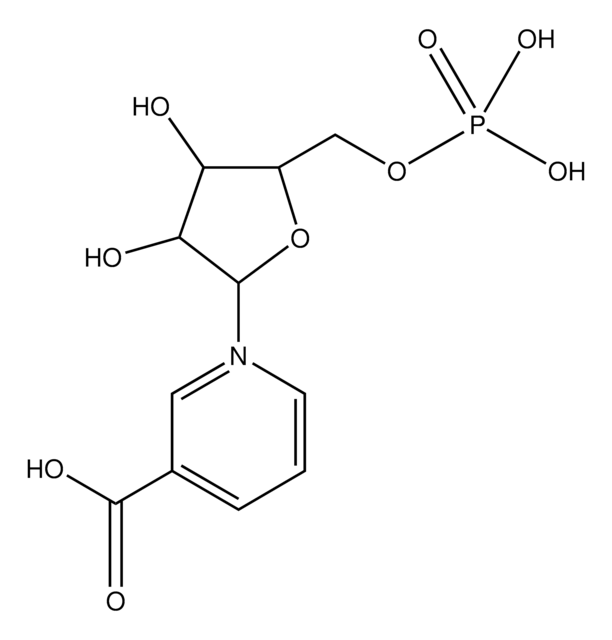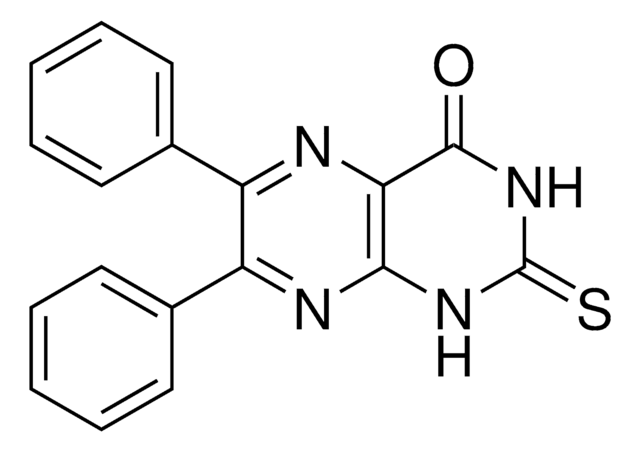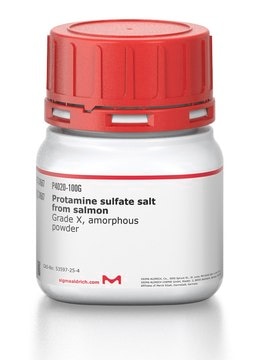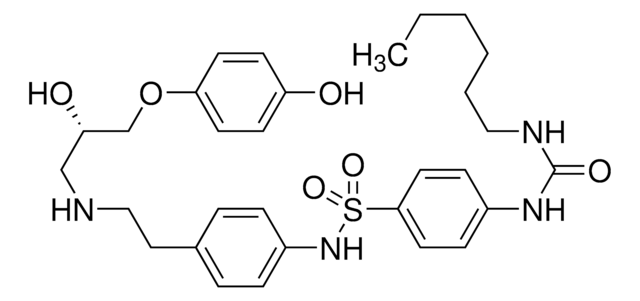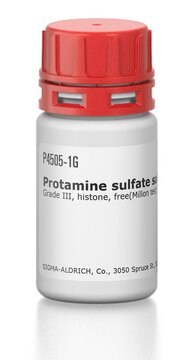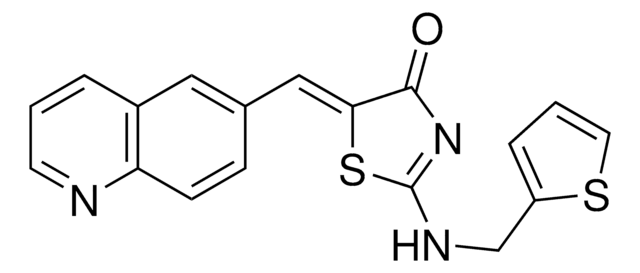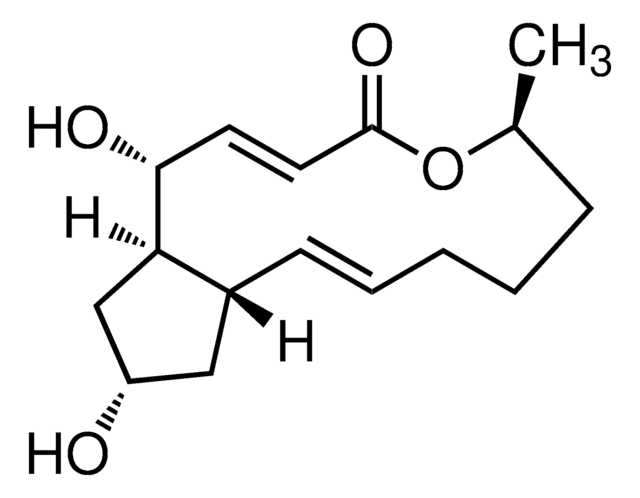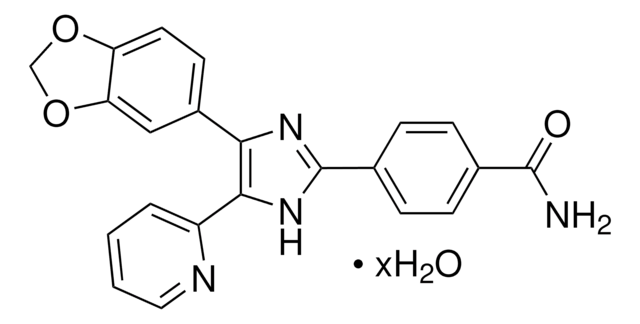R9782
RS-1
≥98% (HPLC)
동의어(들):
3-[(benzylamino)sulfonyl]-4-bromo-N-(4-bromophenyl)benzamide, 4-Bromo-N-(4-bromophenyl)-3-[[(phenylmethyl)amino]sulfonyl]-benzamide, RAD51-stimulatory compound 1
로그인조직 및 계약 가격 보기
모든 사진(1)
About This Item
실험식(Hill 표기법):
C20H16Br2N2O3S
CAS Number:
Molecular Weight:
524.23
MDL number:
UNSPSC 코드:
12352200
PubChem Substance ID:
NACRES:
NA.77
추천 제품
분석
≥98% (HPLC)
양식
powder
색상
off-white to light tan
solubility
DMSO: ≥10 mg/mL
저장 온도
room temp
SMILES string
Brc1ccc(NC(=O)c2ccc(Br)c(c2)S(=O)(=O)NCc3ccccc3)cc1
InChI
1S/C20H16Br2N2O3S/c21-16-7-9-17(10-8-16)24-20(25)15-6-11-18(22)19(12-15)28(26,27)23-13-14-4-2-1-3-5-14/h1-12,23H,13H2,(H,24,25)
InChI key
SWKAVEUTKGKHSR-UHFFFAOYSA-N
애플리케이션
RS-1 has been shown to enhance CRISPR genome editing efficiency. To see other small molecule CRISPR enhancers, visit sigma.com/CRISPR-enhancers.
RS-1 has been used:
- as a homology-directed repair (HDR) agonist to study its effects on in human hematopoietic stem/progenitor cells (HSPCs)
- as HDR agonist to analyze its effects on DNA repair modulation in human induced pluripotent stem (iPS) cells
- as RAD51 agonist to study its effects on double-stranded break repair
생화학적/생리학적 작용
RS-1 (RAD51-stimulatory compound 1) is a stimulator of the human homologous recombination (HR) protein RAD51. RS-1 stimulates binding of hRAD51 to single stranded DNA (ssDNA) and enhances recombinogenic activity by stabilizing the active form of hRAD51 filaments without inhibiting hRAD51 ATPase activity. RS-1 has been shown to enhance CRISPR-Cas9 knock-in efficiency in HEK293A cells and has been shown to enhance both TALEN and Cas9-mediated knock-in efficiency in rabbits.
RS-1 is a stimulator of the human homologous recombination protein RAD51.
RS-1 is a sulfonamido-benzamide compound.
Storage Class Code
11 - Combustible Solids
WGK
WGK 3
Flash Point (°F)
Not applicable
Flash Point (°C)
Not applicable
이미 열람한 고객
Gemma Moir-Meyer et al.
Methods and protocols, 1(3) (2019-06-06)
The study of cellular processes and gene regulation in terminal erythroid development has been greatly facilitated by the generation of an immortalised erythroid cell line derived from Human Umbilical Derived Erythroid Precursors, termed HUDEP-2 cells. The ability to efficiently genome
Liqian Zhu et al.
Veterinary research, 48(1), 45-45 (2017-09-09)
Bovine herpesvirus 1 (BoHV-1) infection enhanced the generation of inflammatory mediator reactive oxidative species (ROS) and stimulated MAPK signaling that are highly possibly related to virus induced inflammation. In this study, for the first time we show that BoHV-1 infection
Xue Wang et al.
BioMed research international, 2019, 7878906-7878906 (2019-11-07)
It has been reported that paclitaxel administration could cause sensorineural hearing loss, and Wnt activation is important for the development and cell protection of mouse cochlea. However, the effect of Wnt signaling in spiral ganglion neurons (SGNs) damage induced by
Jun Song et al.
Nature communications, 7, 10548-10548 (2016-01-29)
Zinc-finger nuclease, transcription activator-like effector nuclease and CRISPR (clustered regularly interspaced short palindromic repeats)/Cas9 (CRISPR-associated protein 9) are becoming major tools for genome editing. Importantly, knock-in in several non-rodent species has been finally achieved thanks to these customizable nucleases; yet
Jon Gil-Martínez et al.
International journal of molecular sciences, 22(4) (2021-03-07)
Fumarylacetoacetate hydrolase (FAH) is the fifth enzyme in the tyrosine catabolism pathway. A deficiency in human FAH leads to hereditary tyrosinemia type I (HT1), an autosomal recessive disorder that results in the accumulation of toxic metabolites such as succinylacetone, maleylacetoacetate
자사의 과학자팀은 생명 과학, 재료 과학, 화학 합성, 크로마토그래피, 분석 및 기타 많은 영역을 포함한 모든 과학 분야에 경험이 있습니다..
고객지원팀으로 연락바랍니다.